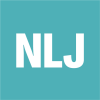Which Norwegian Enterprises Offer the Poorest and the Best Pension Entitlements?
DOI:
https://doi.org/10.18291/njwls.v9i1.113083Keywords:
Employment, Wages, Unemployment & Rehabilitation, Labor Market Institutions & Social Partners, Organization & ManagementAbstract
The National Insurance Scheme (NIS) remains the cornerstone of the Norwegian pension system. The introduction of a mandatory occupational pension in 2006, and the restructuring of the contractual pension (AFP) in 2008, have, however, significantly increased the importance of labor market based pensions. Entitlement to AFP and contributions to occupational pensions are largely determined by individual employers, thus resulting in significant different future pension benefits and opportunities to retire early among employees. This article investigates what characterizes private sector enterprises that offer their employees both entitlement to AFP and a ‘good’ occupational pension, compared with enterprises that only offer a minimum pension. Analyzing data from a survey carried out in 2012 among 1107 private sector companies, I find that companies who offered an occupational pension before such schemes became mandatory in 2006 and companies where the social partners had conducted negotiations concerning pensions, were more likely to offer ‘good’ labor market based pensions. Both of these factors are linked to union strength and strong social partner relations.
Downloads
Published
How to Cite
Issue
Section
License
The Copyright Holder of this Journal is the authors and the Journal. Normally the journal use the CC-BY NC-ND 4.0 licence.
Exceptions to the license terms may be granted
If you want to use content in the Journal in another way then described by this license, you must contact the licensor and ask for permission. Contact Annica Asp at annica.asp@kau.se. Exceptions are always given for specific purposes and specific content only.
Sherpa/Romeo
The Journal is listed as a blue journal in Sherpa/Romeo, meaning that the author can archive post-print ((ie final draft post-refereeing) and author can archive publisher's version/PDF.
Copyright of others
Authors are responsible for obtaining permission from copyright holders for reproducing any illustrations, tables, figures or lengthy quotations previously published elsewhere.
Archives policy
All published material is archived at the Danish Royal Library in conformity with the Danish rules of legal deposit.
Plagiarism screening
We do not screen articles for plagiarism. It is the responsibility of the authors to make sure they do not plagiate.




